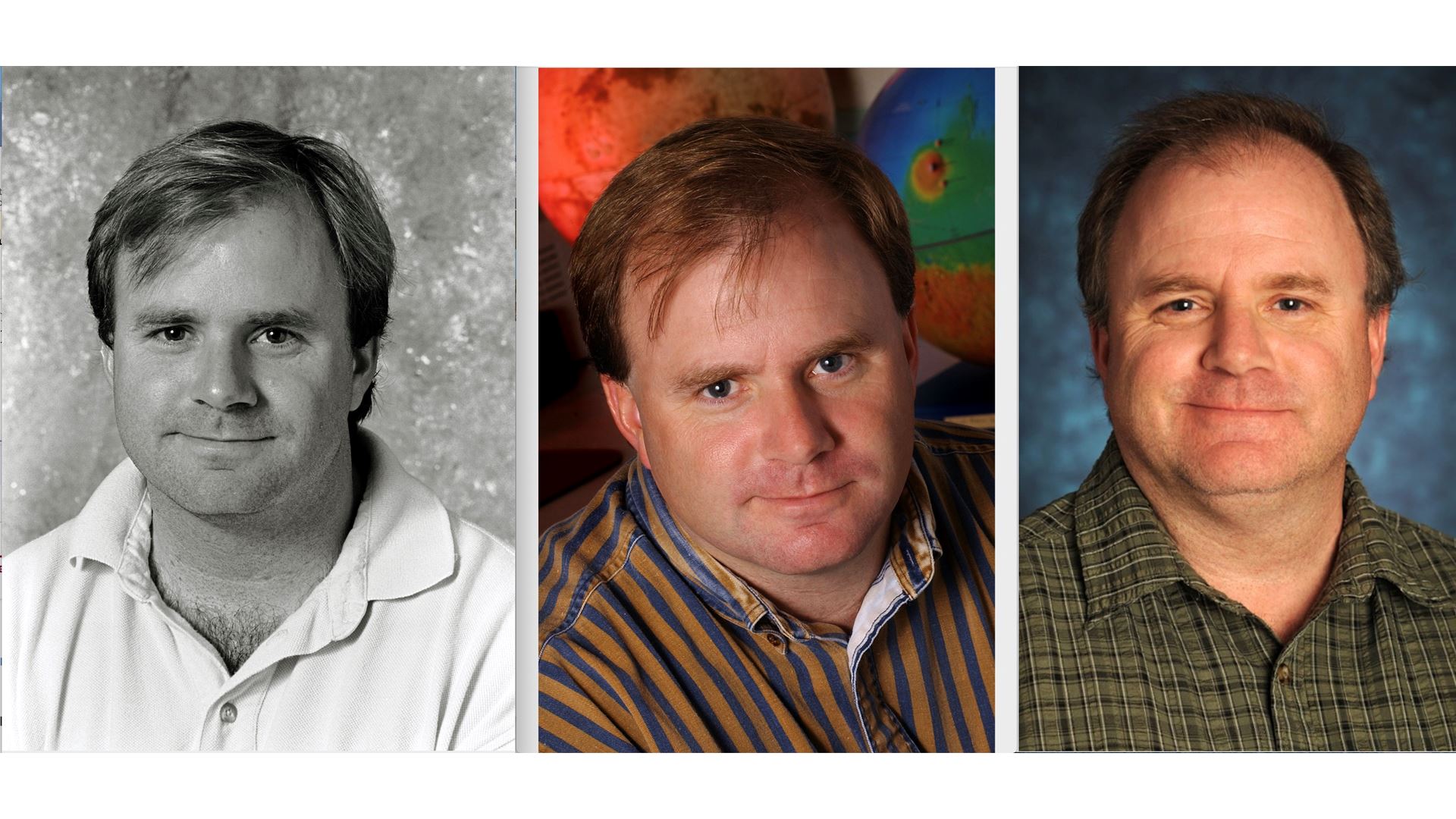Jim Murphy began his journey to New Mexico State University via Mars. He was what he calls a “soft money scientist” at NASA’s Ames Research Center in California through San Jose State University.
But it was his interaction with veteran NMSU astronomer Reta Beebe, then the principal investigator for NASA’s Planetary Data System Atmospheres Node (which is still hosted at NMSU), that began to pull his orbit toward New Mexico.
Looking back now as Murphy eyes retirement July 1, it seems like destiny that he, his wife, Michele, and their three children ended up in Las Cruces nearly 25 years ago.
“I was invited down here to give a talk in 1997 and a few months later a position opened up and I applied,” Murphy said. “I wasn’t their first choice in that search process, but when they couldn’t work it out with their first choice, I was next in line.”
Murphy’s research in the Department of Astronomy in the College of Arts and Sciences was focused on the atmosphere of Mars.
“The research I was involved in since graduate school was the weather and climate on Mars that includes analyses of measurements obtained by orbiting and landed spacecraft on Mars, characterizing the atmosphere and interpreting what those data suggest,” Murphy explained. “I've been involved in fairly substantial computer numerical modeling of Mars’ atmosphere using similar types of models that are used for weather forecasting or climate prediction here on Earth.”
Murphy was involved in robotic missions to Mars. His master’s thesis incorporated meteorological data from the surface of Mars from the Viking landings of the 1970s and 1980s. He was part of the science team for the Mars Pathfinder Mission in 1997 and the Mars Microprobe/Mars Polar Lander missions in 1999, and also on atmospheric aerobraking advisory teams for four US/NASA orbiting missions to Mars. He also provided martian surface meteorological environment characterization for eight robotic exploration missions.
“I also had graduate students who have done Mars work,” Murphy said. “I’ve had students who did research on Venus, on comet dust and research on the icy surface of Europa.”
Murphy began on the path of administrative work as head of the astronomy department in 2005 in his words “to do my part, then step back.”
He never did step back. Although not a role he anticipated, Murphy has continued his administrative work for the last seven years as associate dean of research in the College of Arts and Sciences.
“A concern I had about stepping in to the associate dean’s job was what it might do to the graduate students I was working at the time, but I don’t think it was a problem for them. They had other mentors that they worked with and they had various fellowships that supported them and they’ve gone on to very successful starts to their careers.”
During his 25 years at NMSU and in the Las Cruces community, Murphy has been impressed by the people.
“I think Las Cruces was a good place for my kids to grow up, and I’ve really enjoyed the people I’ve had the opportunity to work with here on campus. I’ve really greatly enjoyed working with Enrico (Pontelli, dean of the College of Arts and Sciences),” said Murphy. “He’s a fabulous dean, and it’s hard to imagine having stayed in this position so long if I wasn’t working for him.”
Murphy’s administrative duties also gave him inspirational insight into the kind of scholarly and creative activities of faculty across the college.
“What I take away most is an improved appreciation for the quality and rigor of the work that goes on in all the departments in the college and an awareness of the motivation and the passion our faculty have for what they’re doing,” he said.
Although Murphy hasn’t been engaged in much Mars research lately, he continues to watch with interest the efforts toward putting a person on Mars.
“It’s exciting to see the new generation of scientists and engineers who are engaged in and conducting those investigations and developing new knowledge,” Murphy said. “At some point in the future, humans will be sent and it will be exciting to see humans standing on the surface of Mars.”
What will Murphy miss most when he and his wife move to Alabama? The dark night skies of New Mexico and the local green chile enchiladas.
-30-

